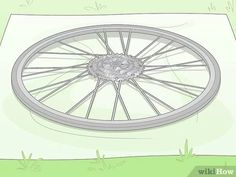3 Ways to Chrome Plate

Introduction:
Chrome plating is an aesthetically pleasing and highly sought-after finish that can provide a shiny, smooth surface to various metal products, from car parts to household fixtures. This fascinating process involves applying a thin layer of chromium onto a metal object through electroplating. In this article, we will explore three popular methods of chrome plating that you can use to achieve the perfect gleaming look.
1. Hexavalent Chromium Plating:
Also known as “hard chrome” or “industrial chrome plating,” this method uses chromium trioxide (also known as chromic acid) as the primary electrolyte in the plating process. It is widely used in the automotive and aerospace industries due to its robust and wear-resistant properties. To perform hexavalent chromium plating:
a. Prepare your metal surface by thoroughly cleaning it using solvents and detergents.
b. Submerge the piece into an electroplating bath containing chromic acid and water.
c. Connect the cathode (negative electrode) to the item, and place the anode (positive electrode) in the bath but do not touch it with the object being plated.
d. Apply an electric current, causing chromium ions to be attracted to the metal surface and form a compact layer.
e. Watch as your piece quickly achieves a shiny chrome look.
2. Trivalent Chromium Plating:
This environmentally friendly alternative to hexavalent chromium plating utilizes trivalent chromium (chromium III sulfate) in place of chromic acid. The process reduces hazardous substances and produces fewer health risks for workers while still yielding impressive results.
a. Clean your metal object as you would for hexavalent chromium plating.
b. Immerse your part in a trivalent chromium electrolyte bath composed mainly of chromium III sulfate and other additives.
c. Attach the cathode and anode as in the previous method, applying an electric current.
d. The chromium ions will bond with your metal object, creating a trivalent chromium layer that produces a visually appealing and durable finish.
3. Electroless (Chemical) Nickel Plating:
An alternative to chromium plating is electroless nickel plating, which employs a nickel-phosphorus alloy to protect the metal item from wear, corrosion, and tarnish. Although it does not produce the characteristic chrome luster, it yields a finish with similar durability and resilience.
a. Thoroughly clean your intended metal piece.
b. Submerge the object into an electroless nickel plating solution containing nickel ions and a chemical reducing agent.
c. The chemical reduction process results in deposits of the nickel-phosphorus alloy onto your metal item, forming a robust and corrosion-resistant layer without requiring any electrical current.
Conclusion:
Now that you are aware of three popular methods of chrome plating—hexavalent chromium plating, trivalent chromium plating, and electroless nickel plating—you can choose the most suitable technique based on your priorities such as appearance, durability, or ecological considerations. Regardless of which method you select, you can be confident that these approaches will help transform your metal items into sleek, shining works of art.






